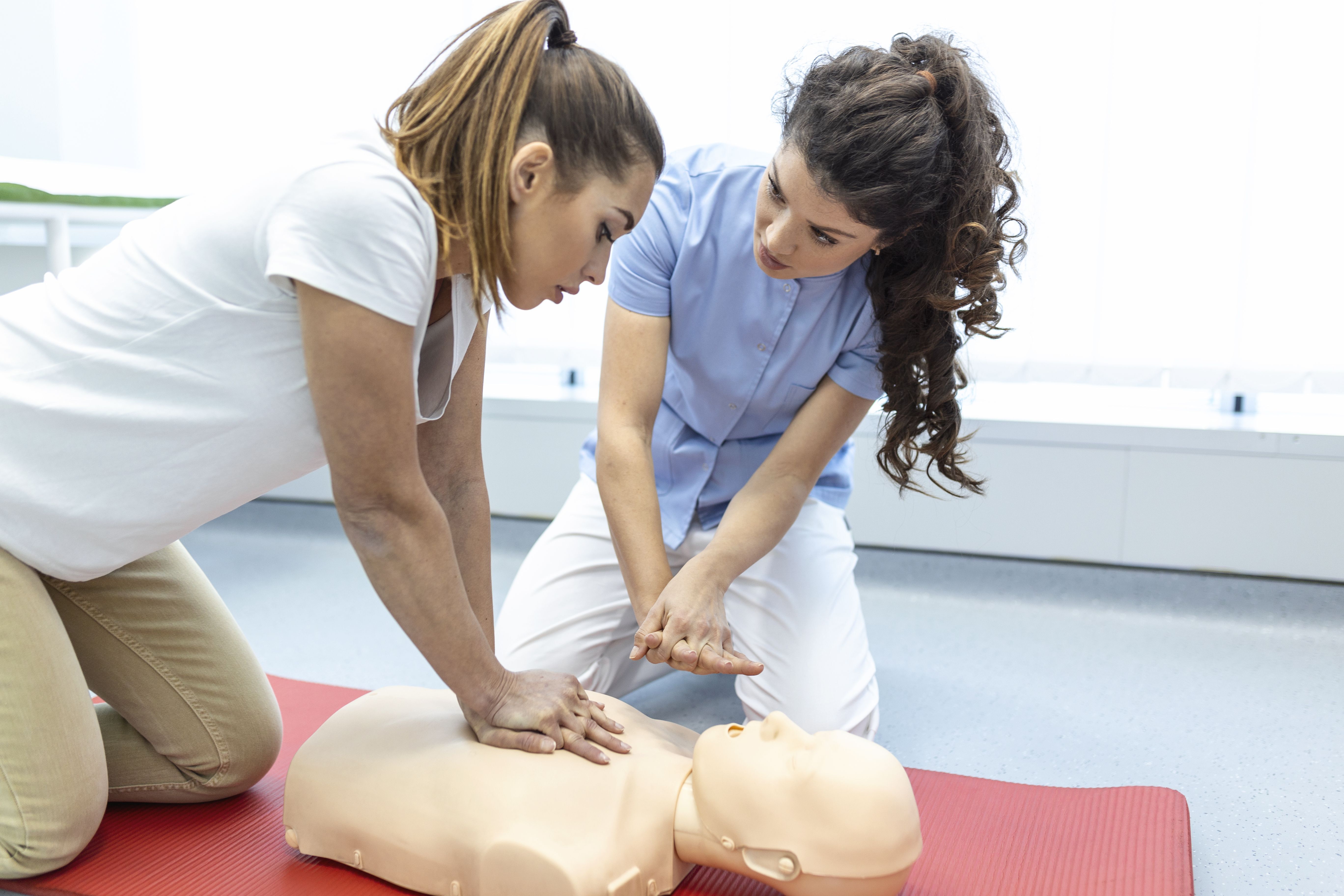
CPR saves lives, plain and simple.
In fact, when a bystander properly performs CPR, a sudden cardiac arrest victim’s survival chances can double or triple.
Still, less than half of all people who suffer sudden cardiac arrest outside of the hospital receive CPR from someone nearby. Why?
An American Heart Association survey found that only 6 in 10 adults feel comfortable taking charge and giving CPR. The reasons why many bystanders shy away from CPR vary, but lack of confidence in performing it correctly – or even the fear of hurting the victim more than helping – are driving factors.
Let’s explore four things you must know if you’re hesitant to perform CPR. With some training and a plan, you’ll be ready, willing, and able to take charge and be the hero of the day when someone’s life is at stake.
1. You become a lifeline
During sudden cardiac arrest, the victim has no heartbeat, isn’t breathing, and has no pulse. Clinically speaking, the person has died. It might sound final, but clinical death isn’t necessarily irreversible. This is where CPR comes in.
While CPR doesn’t stop the victim from sliding toward irreversible death, it can help to slow the slide. Time is critical. For each minute that passes after sudden cardiac arrest that CPR isn’t administered, the victim’s chances of survival drop by 10%. After 10 minutes, survival chances are virtually zero.
CPR, along with use of an automated external defibrillator, or AED, are the only effective medical interventions bystanders can perform in the crucial minutes before emergency medical services can get to the scene. Oftentimes, paramedics arrive when it’s too late because CPR hasn’t been started.
During CPR, your hands become the victim’s heart. The chest compressions performed serve a specific purpose: to act like the heart so that blood continues moving through the body – most importantly, to the brain. It also helps maintain blood flow to the heart, increasing the chances it will beat normally again upon receiving AED shock.
2. Hands-only CPR is highly effective on adults
If you’re uncomfortable with the mouth-to-mouth part of CPR, know that hands-only CPR is shown to be highly effective – especially with adults.
Know too that chest compressions, even when optimally performed, generate only 30%-40% of the heart’s normal blood output. However, some blood flow is better than none. The compressions you deliver can circulate enough blood in the critical minutes until heart function can be restored.
3. You won’t get in trouble
You may be hesitant to learn CPR because you’re worried that you’ll injure the victim, perhaps breaking ribs during the compressions. The reality is CPR, when performed correctly, rarely causes injury. Keep in mind too that the person will almost certainly die if CPR isn’t delivered. When you perform bystander CPR, you’re giving the victim the best – and most likely the only – chance of life.
You might also worry about being sued if you cause injury. Good Samaritan laws protect against this. A person who in good faith provides emergency care or treatment and delivers it in line with their level of training, won’t face legal action or other consequences.
4. Certification gives you know-how, re-certification keeps you sharp
Proper training is key to confidence. CPR certification courses can provide you with the know-how you need.
However, training shouldn’t be a one-and-done deal. CPR is a skill, and skills tend to erode over time if they aren’t practiced. Once you get CPR-certified, it’s important to periodically refresh your training so you’re sharp, confident, and ready to act.
Plus, CPR guidelines may change over time, so it’s best to be sure you’re aligned with the latest best practices. The American Heart Association recommends recertification every two years. If you prefer to recertify more regularly, yearly is a great option.
At Starting Hearts, we can provide you with specific training and equipment for making a life-saving difference.
Contact us for more information: info@startinghearts.org
